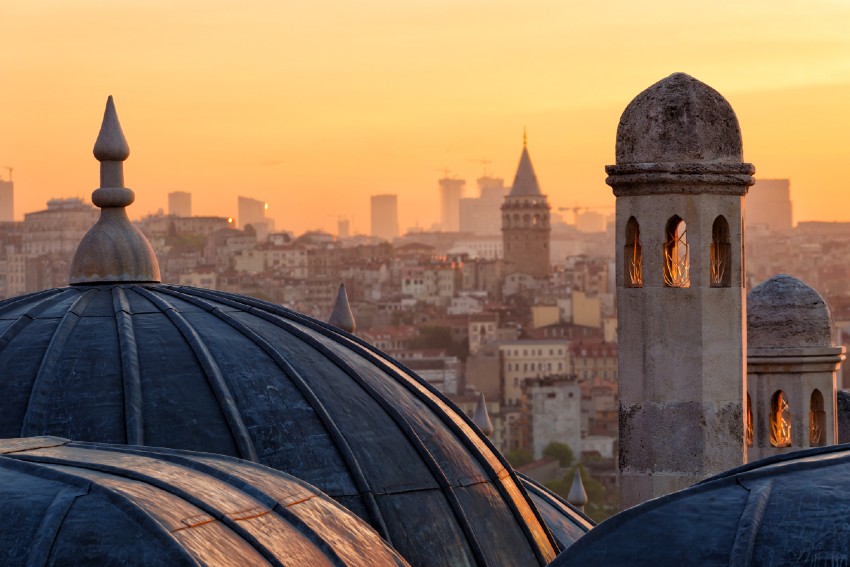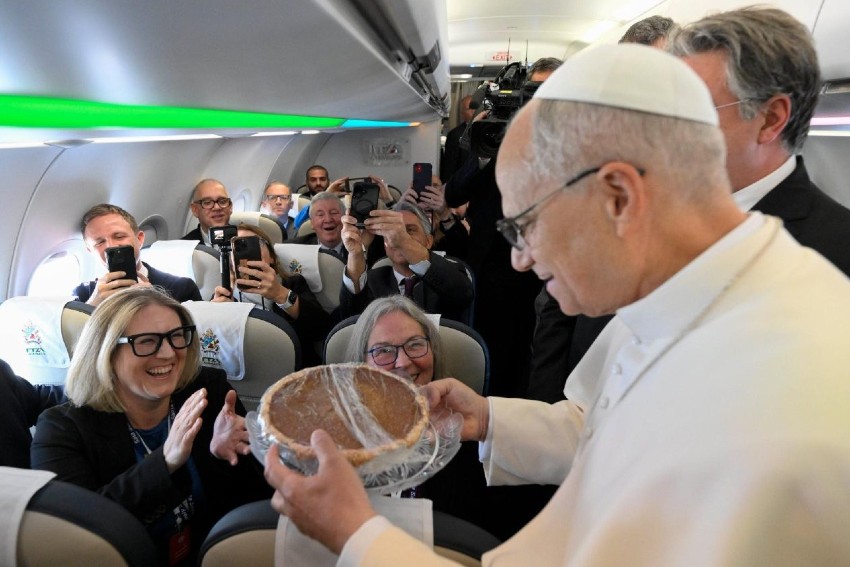Tuesday, July 30, 2019
“Pope Francis is always in my intention. Of course I pray for him, in praying the Rosary, and in celebrating Mass. And I also pray for Pope Benedict, and believe he has a spiritual role in protecting the Church from the devil.” —Archbishop Carlo Maria Vigano, today in a private conversation
“English Catholics are indignant that the Anglican Church authorities have agreed that Rochester cathedral — the second oldest cathedral in the country, taken from the Catholics at the time of the Reformation… the cathedral of St. John Fisher — will be turned into a mini-golf park.” —Archbishop Vigano, reading a news report today. He suggests that it symbolizes the trajectory of much of the Church in the western world
“I am looking for the truth. I spoke to him (Francis) with all the transparency that I knew. Should I have not said the truth to the Pope?” —Archbishop Vigano
Man and holiness
The essential questions facing the Church today remain the great questions of all time:
1) The Transcendent and the Immanent; What is real? Does anything metaphysical (supernatural, partaking of the eternal, things like divine grace and stunning, sudden miracles) truly exist, or is everything metaphysical and supernatural just, as the materialists say, unreal, illusory, the product of false hopes for “something more” than the changing, ever-fleeing-away productions of time?
2) Anthropology: What is man? Does the being and mind of man, the “person” that each human being is as a conscious entity (and perhaps it is right to speak in this context of the “soul” that each person possesses, or is) also truly exist, or is personhood, and the soul, illusory and unreal? Are we just a complicated collection of chemicals, or is there something in us (the image and likeness of God?) that transcends the chemicals, something which cannot be accounted for by that “scientific” chemical analysis?
3) Theology: What or Who is God? Does God truly exist and, if so, what is His nature and what does that mean for the life of men?
It is on this last point that the question of holiness arises.
Persuaded that the nature of God is to “be holy” (“hallowed be Thy name”) and that (as an axiom, not as a judgment) no thing that is un-holy, or that has not been made holy (sanctified, consecrated) may be (exist) in the presence of God, Christians are persuaded that some agency or power is needed to bring the human into closer, more intimate and more lasting contact with the divine.
Hence… the sacramental system of the Church, to fill with grace and divine life (the life of Christ) the core, the essential being, of men and women.
The “divinization” (“theosis“) of man through holiness, through the movement “into God” of what is mortal, fallible, sinful… human.
From this, the love of the Church, the mystical body of Christ, as that which mediates life and grace to mankind.
But also from this, in equal measure it seems, the hatred of the Church, on the part of those who think all that is written above is nonsense, or worse, harmful propaganda which warps minds, limits personal freedom and induces neuroses, rather than mediating life and grace to men.
And by this roundabout way, I come to the controversial and (I think) holy Archbishop Carlo Maria Vigano, with whom I am meeting during these days in a quiet place.
The Jesuits and the Long Plan
Vigano is 78 and will soon turn 79.
His health is good, he walks well, there is a skip still in his step, but he has been through a period of considerable stress, and time takes its toll on all of us.
So he seems a bit weary, in comparison to how he was in 2010, or 2015, when I knew him in Rome and in the United States, where he was the papal nuncio (2011-2016).
We have spoken now for many hours, and his central concern is for the safety, freedom and doctrinal purity of the Church — the mystical body of Christ, the people of God, which he has served throughout his life, and still wishes to serve with all his being.
I am struck as we speak by the contradictions of this soft-spoken man. He has been branded by some as the most heroic “truth-teller” in this age of the Church, but in Rome he has been branded by many as “Judas” for his alleged betrayal of Pope Francis.
In the style of Frederic Martel (whose rambling and, at times, obsessive book In the Closet of the Vatican speaks about Vigano on almost 50 occasions, and seems to be written in part out of a fixation to understand who Vigano is and who he represents), one may well ask: Who is Vigano, really?
A courageous soul, balanced between piety, prayer, and professional competence, willing to risk his reputation to speak out on behalf of all believers, especially the weak and the abused?
Or someone far less appealing, a coward, not a hero, as some venom-tongued monsignors in Rome are saying?
History will have to judge, of course, but perhaps these letters can merit to be the first draft of that history which will tell us whether we are in the presence of a saint hated by proud men with an agenda, or a little man who is the unworthy antagonist of noble and saintly powers attempting to fulfill Christ’s noble vision for His Church.
The question is dramatic, especially because this small, gentle man seems completely miscast to play either role.
Would anyone ever have cast him as a courageous hero? Doubtful!
He is a small man with intelligent eyes, exquisite manners, studious, hardworking, uncomplaining amid the rigors of travel, not dashing, not evidently heroic.
At the same time, he is a type of living reservoir of Roman curial knowledge, meaning that he knows the Curia with mathematical precision from end to end, from one office to the next, and his memory ranges back over more than 50 years. He is “Mr. Roman Curia.”
So this man is an archetypal “servant of the Pope.” Every Pope!
He has served Pope Paul VI, Pope John Paul I, Pope John Paul II, Pope Benedict, and now Pope Francis.
So how could the archetypal papal servant suddenly have become the archetypal papal betrayer, the “Judas” of the Curia in the early 21st century? The very thought causes one to shake one’s head with puzzlement. It cannot be!
Here we have a soul whose entire life has revolved around the unquestioning service of the leadership of the Catholic Church — traveling on a dozen occasions throughout the night across the deserts of Iraq toward Syria from Bagdad, all night rides alone in a car (one might almost refer to him as “Vigano of Arabia”)… traveling to almost every diocese in tribal war-torn Nigeria over six years in that country in the 1990s… traveling all over the United States during five years as nuncio in that vast country. What an astounding story!
And yet, now, as the October Amazon Synod draws near, and Catholic theologians increasingly find its working document a text based not on Christo-centric Christian revelation, but on observation of and respect for nature without any direct mention of Christ and his saving mission of incarnation, crucifixion, resurrection, this same Vigano is deeply troubled.
“Where is the Christian message here?” Vigano asks me, fixing me with his intense gaze under bushy eyebrows.
And he gives his own answer: “In fact, the figure of Christ is absent. The Synod working document testifies to the emergence of a post-Christian Catholic theology, now, in this moment. And this is very troubling. It is against everything I have worked for and believed for all my life.
“Let’s consider the history of the Jesuits,” Vigano continues. “That is something I am studying now with great care. In fact, if you would like to know the synthesis of my thought, it is this: What we are now seeing is the triumph of a 60-year-old plan, the successful execution of a well-thought out plan to bring a new sort of thinking into the heart of the Church, a thinking rooted in elements of Liberation Theology containing strands of Marxism, little interested in traditional Catholic liturgy or morality or theology, but rather focused on ‘praxis’ in the field of social justice. And now this plan has achieved one of its supreme goals, with a Jesuit on the See of Peter…”








Facebook Comments